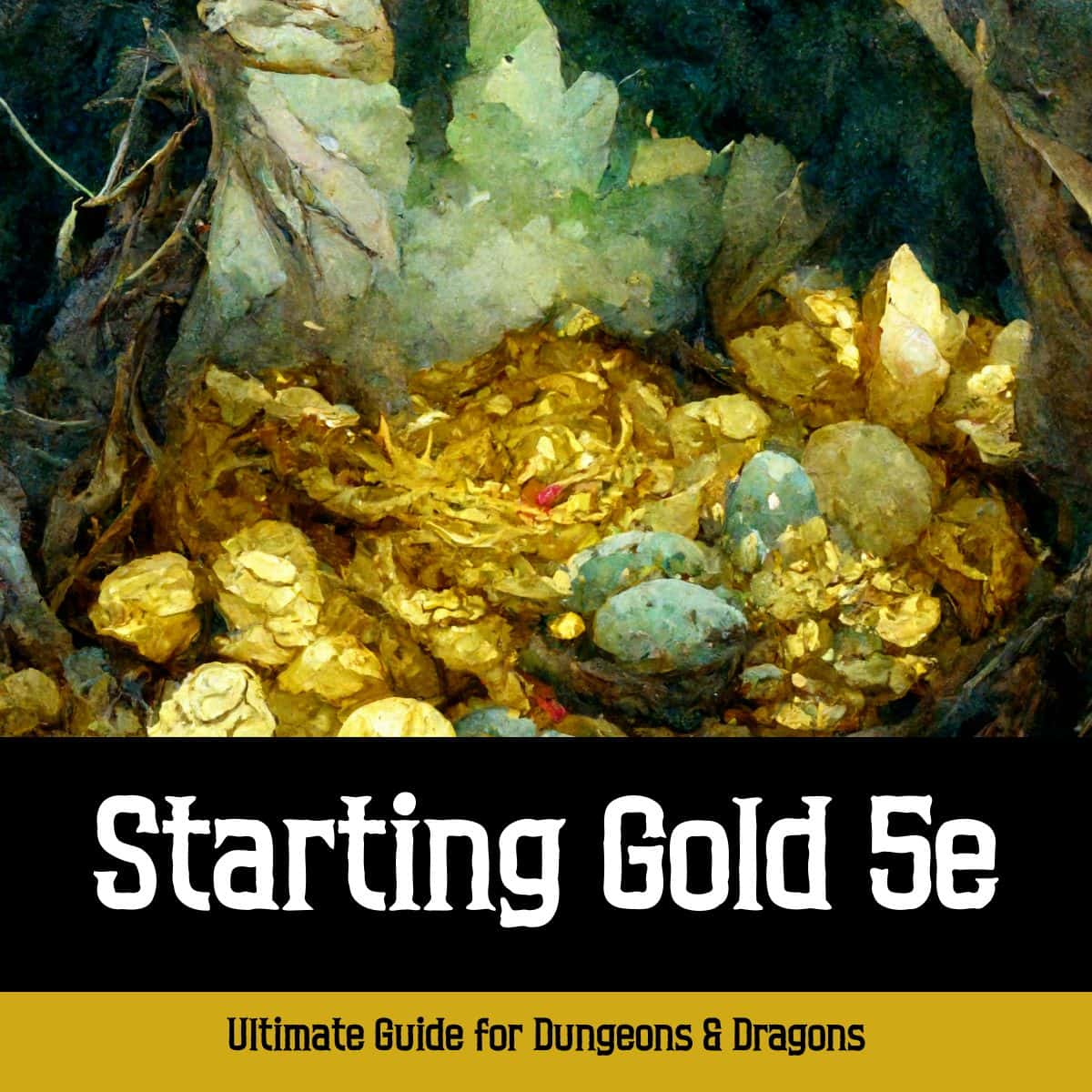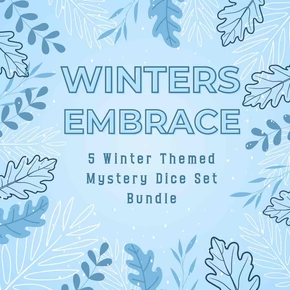
5e Starting Gold Guide
5e Starting Gold Guide - Plate Armor Costs How Much?
You’ve crafted pages of backstory, set each ability score and ability modifier, figured out your class features, and your character is ready to play, but wait, how much gold do you start with in dungeons and dragons 5th edition? How much is this armor, and do I have the money I need for these spell components? DD 5e starting wealth is simple compared to many other editions and systems but starting gold is still a common stumbling block for many players. Get your abacus and scales ready as we go through everything you need to know.
Table of Contents:

Pick Between Methods
One of the most common misconceptions I see during 5e character creation is that players think they get a random amount of starting gold and the equipment from their background and class for their character wealth, but in reality, it’s a choice. The official rules are that you get to choose between a random amount of starting gold or the starting gold and equipment from your background and class. The logic between picking either one is a bit finicky, so let us go through a rough guide of each method and how to pick one.
Random Starting Gold
When using this method, you’ll make a number of D4 rolls depending on your starting class to determine your initial wealth. You should make these rolls in front of your DM, and taking this method is typically riskier. You have a chance of rolling much more gold, but the average gold rolls will be about the same or less than you would just taking your basic starting equipment option.
If you choose this method, you can find your starting gold and each average dice roll on the following helpful chart:
|
Class |
Starting GP |
|
Barbarian |
2d4 x 10gp (average 50 gp) |
|
Bard |
5d4 x 10gp (average 125 gp) |
|
Cleric |
5d4 x 10gp (average 125 gp) |
|
Druid |
2d4 x 10gp (average 50 gp) |
|
Fighter |
5d4 x 10gp (average 125 gp) |
|
Monk |
5d4 gp (average 13 gp) |
|
Paladin |
5d4 x 10gp (average 125 gp) |
|
5d4 x 10gp (average 125 gp) |
|
|
Rogue |
4d4 x 10gp (average 100 gp) |
|
Sorcerer |
3d4 x 10gp (average 75 gp) |
|
Warlock |
4d4 x 10gp (average 100 gp) |
|
Wizard |
4d4 x 10gp (average 100 gp) |
Hey What About Artificers?

Because the artificer class was added after this chart was introduced, we don’t know how much an artificer should start with using this method. I’ve yet to find any official errata or statement concerning it, but it seems that most DMs agree that the artificer is most similar to a Wizard and should probably get about the same amount of starting gold. So if you use this method and you’re playing an artificer talk with your DM about it, but a good likely compromise is 4d4 X 10gp.
Want Endless Dice? Check out our Dice Subscription
Spending Gold Before Session 1
This method essentially generates you a pool of gold which you can use to buy all the gear your character will start with. Generally, this gives you access to everything with a gold price in the player's handbook, though your DM may decide certain things are unavailable. The most important things you'll need to make sure you get is your armor if your character will wear any, weapons (typically both a melee and ranged option is recommended), and some basic adventuring gear like rope, a backpack, or anything specific you think you might need for the setting. If you're a spellcaster, make sure you get a spellcasting focus (or spell component pouch), and it doesn't hurt to keep a gold piece or two left over, so you have some spending money once the game starts.
Standard Starting Equipment
The other method for determining what gold and equipment you start out with is very simple. When you create your character, your background and your class options both provide you with equipment and a pouch of gold, exactly what you get depends on what background and class you picked, and the class equipment usually has several options within it. Simply add together each gold piece and the stuff you got from your background with what you picked out from your class.
As a quick point of reference, here’s all the gold quantities you get from all (from core books anyway) the backgrounds on a handy alphabetical chart:
|
Background |
Starting GP |
|
Acolyte |
15gp |
|
Anthropologist (ToA) |
10gp |
|
Archeologist (ToA) |
25gp |
|
Charlatan (PHB) |
15gp |
|
City Watch / Investigator (SCAG) |
10gp |
|
Clan Crafter (SCAG) |
5gp gem and 10gp |
|
Cloistered Scholar (SCAG) |
10gp |
|
Courtier (SCAG) |
5gp |
|
Criminal / Spy |
15gp |
|
Entertainer (PHB) |
15gp |
|
Faction Agent (SCAG) |
15gp |
|
Far Traveler (SCAG) |
10gp jewelry and 5gp |
|
Folk Hero |
10gp |
|
Gladiator (PHB) |
15gp |
|
Guild Artisan/Merchant (PHB) |
15gp |
|
Haunted One (COS) |
None |
|
Hermit (PHB) |
5gp |
|
Inheritor (SCAG) |
15gp |
|
Knight (PHB) |
25gp |
|
Knight of the Order (SCAG) |
10gp |
|
Mercenary Veteran (SCAG) |
10gp |
|
Noble |
25gp |
|
Outlander (PHB) |
10gp |
|
Pirate (PHB) |
10gp |
|
Sage |
10gp |
|
Sailor (PHB) |
10gp |
|
Soldier |
10gp |
|
Urban Bounty Hunter (SCAG) |
20gp |
|
Urchin (PHB) |
10gp |
|
Uthgardt Tribe Member (SCAG) |
10gp |
|
Waterdhavian Noble (SCAG) |
20gp |
No surprise here that living it up as an aristocrat gets you the most starting gold with the noble 25gp.
What If I’m Starting at a Higher Level?
Technically you get the same exact equipment if you're starting as a 1st level character or a campaign with characters starting at 20th level, but most DMs will throw you a bone and do gold by level. Tucked into the Dungeon Master’s Guide we can find a great little chart presenting the DM with options for higher level starting gold and equipment for characters above level 4. Keep in mind though that your Dungeon Master is under no obligation to use these, but these are good guidelines for what starting at higher levels looks like:
|
Character Level |
Low Magic Campaign |
Standard Campaign |
High Magic Campaign |
|
1st–4th |
Normal starting equipment |
Normal starting equipment |
Normal starting equipment |
|
5th–10th |
500 gp plus 1d10 × 25 gp, normal starting equipment |
500 gp plus 1d10 × 25 gp, normal starting equipment |
500 gp plus 1d10 × 25 gp, one uncommon magic item, normal starting equipment |
|
11th–16th |
5,000 gp plus 1d10 × 250 gp, one uncommon magic item, normal starting equipment |
5,000 gp plus 1d10 × 250 gp, two uncommon magic items, normal starting equipment |
5,000 gp plus 1d10 × 250 gp, three uncommon magic items, one rare item, normal starting equipment |
|
17th–20th |
20,000 gp plus 1d10 × 250 gp, two uncommon magic items, normal starting equipment |
20,000 gp plus 1d10 × 250 gp, two uncommon magic items, one rare item, normal starting equipment |
20,000 gp plus 1d10 × 250 gp, three uncommon magic items, two rare items, one very rare item, normal starting equipment |
As a weird side-note here, you can see on the chart that there's no way to start with a common magic item as it skips straight to uncommon magic items. Uncommon magical items are better obviously, but if there are common items you really want most DMs will let you substitute them in, and particularly nice ones might even let you get a more than one common magic item in exchange for the uncommon ones. It's also likely that you'll be limited to magic items from the players handbook or dungeon masters guide, rather than homebrew items or items from specific adventure paths.
Which Option is Better?
Assuming you have this choice, and your DM didn’t just tell you which to use, you have a decision to make. Do you take the starting gear as-is or do you risk a roll of the dice for the chance at some more gold to spend on starting gear? Just as the statistics pan out, you’re unlikely to “win” on these rolls and get more than you would just taking the starting gear as-is. There are however a few builds and combinations where it might be in your favor to roll.
Times to Roll for Starting Gold
Generally in fifth edition, rolling for your starting gold is a gamble that’s not mathematically wise, but there are a few exceptions and times where it’s in your best interest to roll for your gold.
Builds with Obscure Equipment
The starting equipment packages in dd 5th edition give you more gold pieces worth of stuff on average than rolling, but what if you want different or very specific stuff or have a weird equipment route planned? Your character design may include blowguns and darts, or maybe you have some cool ideas on how to use alchemist’s fires. Maybe you really want to cast a bunch of chromatic orbs and you just need all the diamonds you can get your hands on. Whatever the build, if it is using equipment not found in your class equipment package, you may need to roll for it instead.
You’re a Bard
For whatever reason, the bard class on average gets more gold when rolling than their starting package is worth, to the tune of usually about 25 gold pieces. Statistically, it’s better to roll for starting gold when playing a bard basically every time rather than taking their starting packages. This still has the potential to blow up in your face if you get a really bad roll, but mathematically you should come out on top.
Your Build Uses Cheaper Packages
The backgrounds simply give you a set number of specific items and gold, but the class packages usually give you options. Weapon A, or weapon B, armor set A or armor set B, that kind of thing. And while the most expensive options from among them might be better than rolling for gold, if you’re planning to take the cheaper items it might not be the best choice anymore.
For example, in the sorcerer’s starting equipment, you get your choice between a light crossbow and 20 bolts, or any simple weapon. A light crossbow and 20 bolts costs 26 gp, but if you weren’t planning on messing with crossbows and wanted a spear instead (which costs 1 gp), you’ve basically cost yourself 25 gp worth of value.
The starting equipment packages are balanced for the pricey maximum equipment options, not the cheap minimum equipment ones, and if all you want is the cheap equipment choices, you’re almost always better off rolling for gold rather than taking the package.
If Nothing Above Applies, Take the Starting Equipment
If none of the special cases we just went through applies to you, you’ll almost always get a better value out of the standard starting equipment then you would rolling for gold coins. Martial classes and particularly the paladin class should almost always take the equipment packages since they essentially need a perfect roll to beat the package value and an average roll will usually lose them considerable value. The background equipment and class equipment typically combine into a set of decent starting equipment no matter what you choose.
How Does Currency Work In 5e?
How much is a platinum piece? And my Dungeon Master handed out something called electrum coins, what the heck are those?
The DnD economy runs on coins, each coin regardless of it's metal weighs a "troy ounce", which is roughly a third of an ounce or 0.32 oz. Thus, no matter the denomination your coinage will weigh roughly 1 pound per 50 coins.
Most things are listed in gold pieces (abbreviated "gp") but there are a lot of coins in dungeons and dragons.
Just in case your DM hands you a bag of mixed change for loot and you need a gold calculator, here's a handy chart with all the exchange rates:
|
Coin |
CP |
SP |
EP |
GP |
PP |
|
Copper Piece (cp) |
1 |
1/10 |
1/50 |
1/100 |
1/1,000 |
|
Silver Piece (sp) |
10 |
1 |
1/5 |
1/10 |
1/100 |
|
Electrum Piece (ep) |
50 |
5 |
1 |
1/2 |
1/20 |
|
Gold Piece (gp) |
100 |
10 |
2 |
1 |
1/10 |
|
Platinum Piece (pp) |
1,000 |
100 |
20 |
10 |
1 |
--------------
ENJOY THIS GUIDE? YOU MAY ALSO LIKE:
Become Kung Fu Panda with our Monk Druid 5e Multiclass Guide
Want to wield two swords like Drizzt? Check out our Two Weapon Fighting 5e Guide!
Want to play a lethal ninja? Dance the blade's edge with our Monk Rogue 5e multiclass guide
Want Holy Tunes? Check out the bardadin, aka Bardadin - Bard Paladin 5e Multiclass guide
Need a New Dice Set? Check out our DND Dice here. They are perfect for every gamer as a gift or just treating yourself!
Thinking about other classes? Check out our giant list of D&D 5e Tools and Tips here.
Looking to find a D&D Group? Check out our guide on How to Find a D&D Group.
New to D&D? Check out our Beginner's Guide to D&D
DM's strike terror into your party with our Red Dragon 5e BBEG Guide
Warbarian! A warlock barbarian combo can be insanely broken when combined. Check out our guide now!
Feel like taking a huge chance and drawing from a deck that could ruin the whole campaign? Check out the infamous magic item: Deck of Many Things in 5e
Want to always get your sneak attack? Check out our Artificer Rogue Multiclass Guide for details on how to make this happen.
Want to master holy and arcane magics? Check out our Cleric Wizard 5e Multiclass Guide!
Stuck during character creation? Check out the Point Buy Blog post to get unstuck!
Existing classes not something you’re interested in? Check out our Custom 5e Class Guide !
Space Hamsters? Ooze PCs? Check out our Spelljammer Adventures in Space review

Disclaimer
Last updated: January 27, 2019
The information contained on www.SkullSplitterDice.com website (the "Service") is for general information purposes only.
www.SkullSplitterDice.com is a participant in the Amazon Services LLC Associates Program, an affiliate advertising program designed to provide a means for sites to earn advertising fees by advertising and linking to Amazon.com. (source: Section 5)
Blueshift Nine, LLC assumes no responsibility for errors or omissions in the contents on the Service.
In no event shall Blueshift Nine, LLC be liable for any special, direct, indirect, consequential, or incidental damages or any damages whatsoever, whether in an action of contract, negligence or other tort, arising out of or in connection with the use of the Service or the contents of the Service. Blueshift Nine, LLC reserves the right to make additions, deletions, or modification to the contents on the Service at any time without prior notice.
Blueshift Nine, LLC does not warrant that the Service is free of viruses or other harmful components.
Affiliate disclaimer
This affiliate disclosure details the affiliate relationships of Blueshift Nine, LLC with other companies and products.
Some of the links are "affiliate links", a link with a special tracking code. This means if you click on an affiliate link and purchase the item, we will receive an affiliate commission.
The price of the item is the same whether it is an affiliate link or not. Regardless, we only recommend products or services we believe will add value to our readers.
By using the affiliate links, you are helping support the Service, and we genuinely appreciate your support.
Affiliate advertising programs that the Service uses are:
- Amazon Services LLC Associates Program
- As an Amazon Associate, I earn from qualifying purchases.
- Blueshift Nine, LLC is a participant in the Amazon Services LLC Associates Program, an affiliate advertising program designed to provide a means for sites to earn advertising fees by advertising and linking to Amazon.com or endless.com, MYHABIT.com, SmallParts.com, or AmazonWireless.com.
- Pages on this Service may include affiliate links to Amazon and its affiliate sites on which the owner of this Service, Blueshift Nine, LLC, will make a referral commission.


